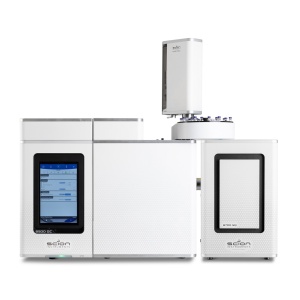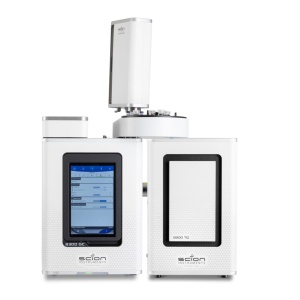Gas chromatography mass spectrometry (GC-MS) consists of two very different analytical techniques: gas chromatography (GC) which is hyphenated to mass spectrometry (MS). Usually, the analytical instrument consists of a gas chromatograph that is hyphenated via a heated transfer line to the mass spectrometer, and the two techniques take place in series. However, some specialist and usually miniature or portable instruments contain the whole GC-MS within a single box.
GC is a separation science technique that is used to separate the chemical components of a sample mixture and then detect them to determine their presence or absence and/or how much is present. GC detectors are limited in the information that they give; this is usually two-dimensional giving the retention time on the analytical column and the detector response. Identification is based on comparison of the retention time of the peaks in a sample to those from standards of known compounds, analyzed using the same method. However, GC alone cannot be used for the identification of unknowns, which is where hyphenation to an MS works very well. MS can be used as a sole detector, or the column effluent can be split between the MS and GC detector(s).
MS is an analytical technique that measures the mass-to-charge ratio (m/z) of charged particles and therefore can be used to determine the molecular weight and elemental composition, as well as elucidating the chemical structures of molecules. Data from a GC-MS is three-dimensional, providing mass spectra that can be used for identity confirmation or to identify unknown compounds plus the chromatogram that can be used for qualitative and quantitative analysis.
GC-MS and GC-MS/MS are used in many industries for routine analysis looking for volatile contaminants with a molecular weight of usually less than 700 amu, for example in the food, environmental, forensics, anti-doping and consumer products industries. GC-MS is also used in research to identify unknown volatile compounds, including in food and flavors, space, petrochemical, chemical, agriculture, tobacco, pharmaceutical, healthcare, energy, mining, environmental and forensics to name but a few.
Drug testing, as an example, can be carried out for multiple reasons: pathology, healthcare and anti-doping of both humans and animals.9 Biological fluids like urine and blood samples are complex with large amounts of matrix and usually the drugs are at very low concentration. Therefore, their detection requires a hyphenated technique like GC-MS to start to separate the target or compounds of interest away from the matrix peaks. They can then be selectively identified using MS/MS and more frequently MS/MS with an HRMS and sometimes additional GC x GC separation.
Gas Chromatography - Mass Spectroscopy
Gas Chromatography - Mass Spectroscopy


